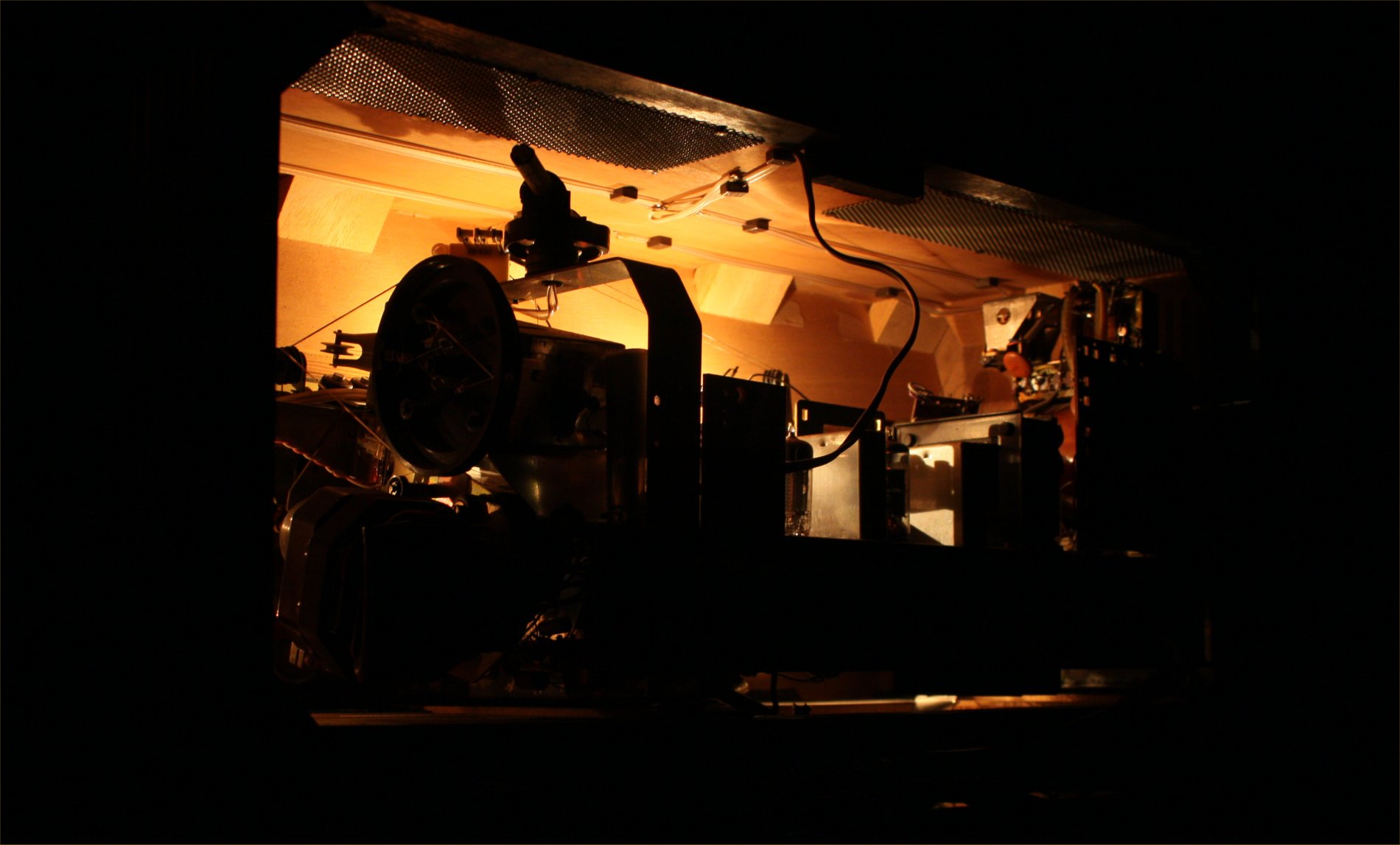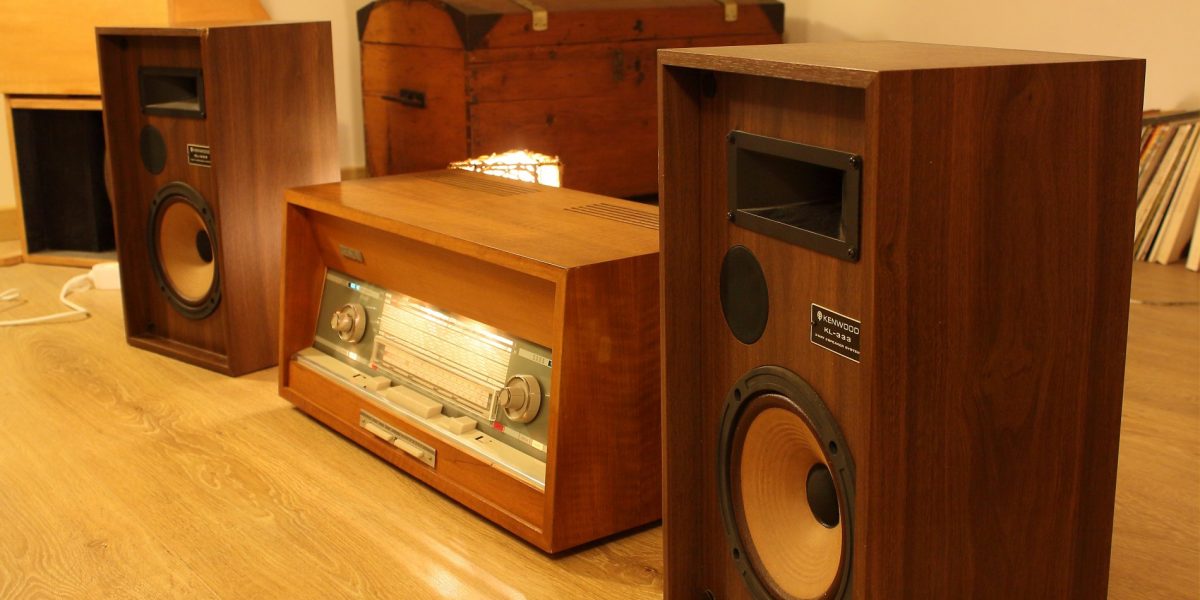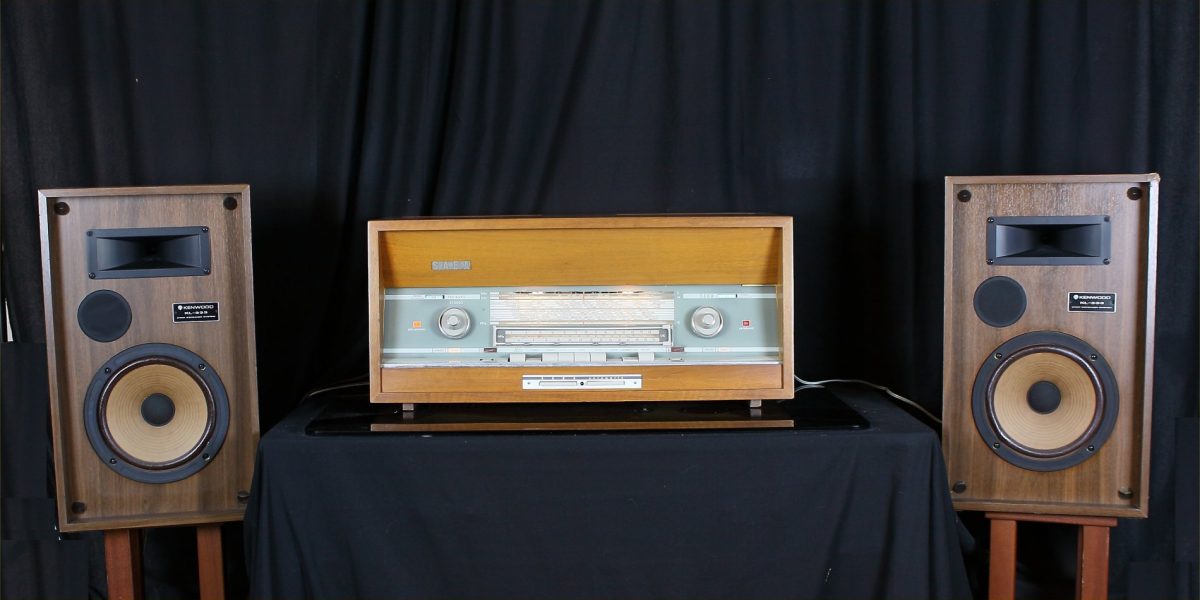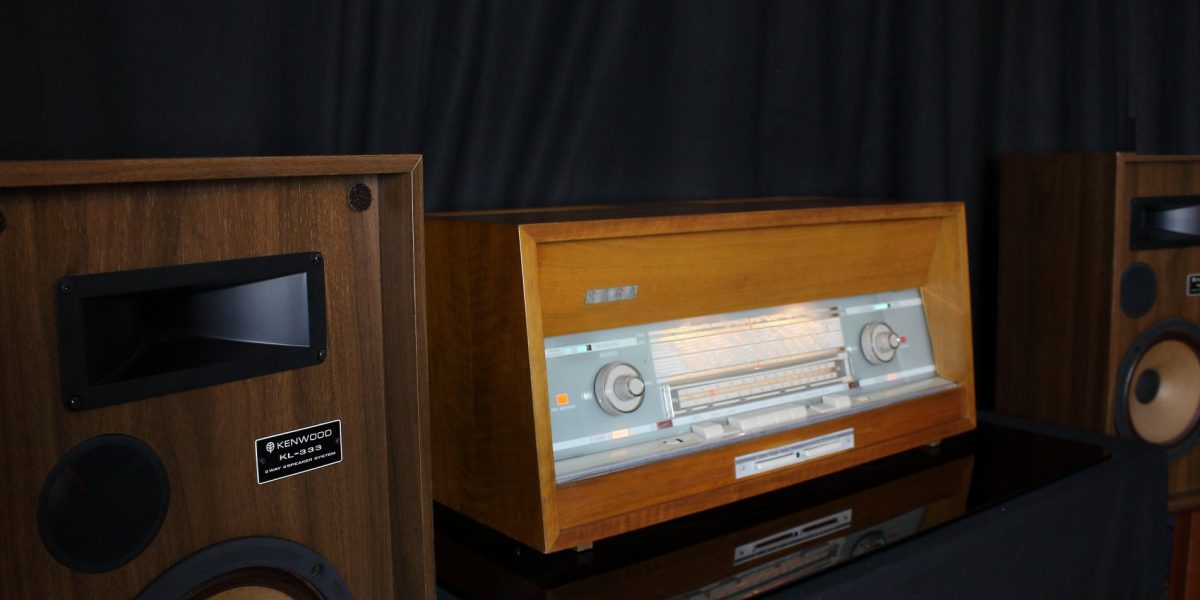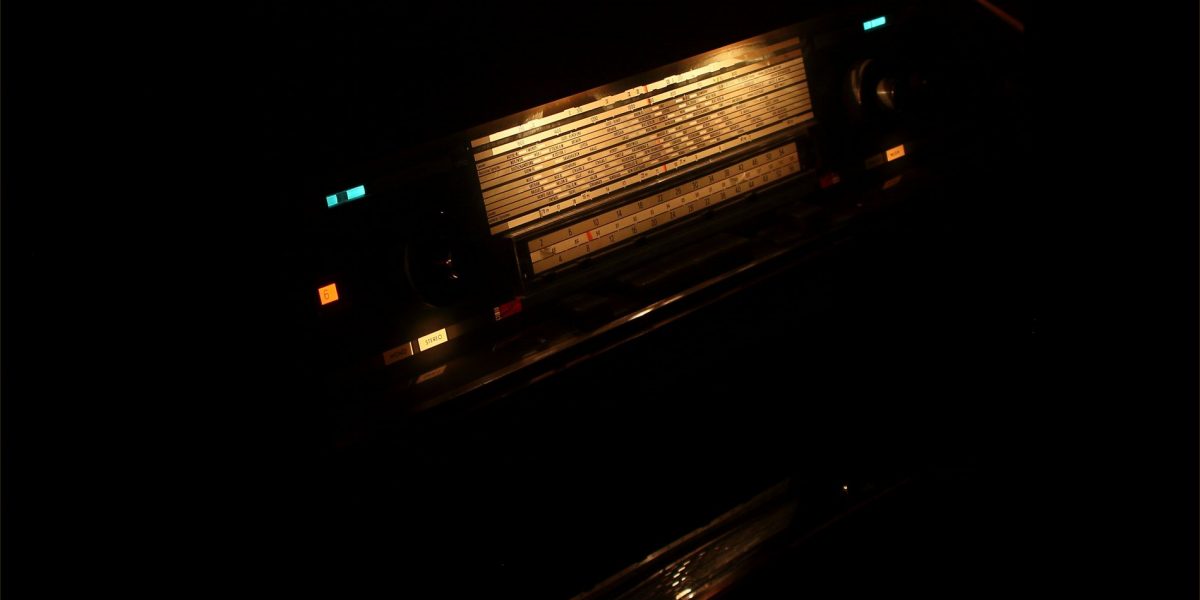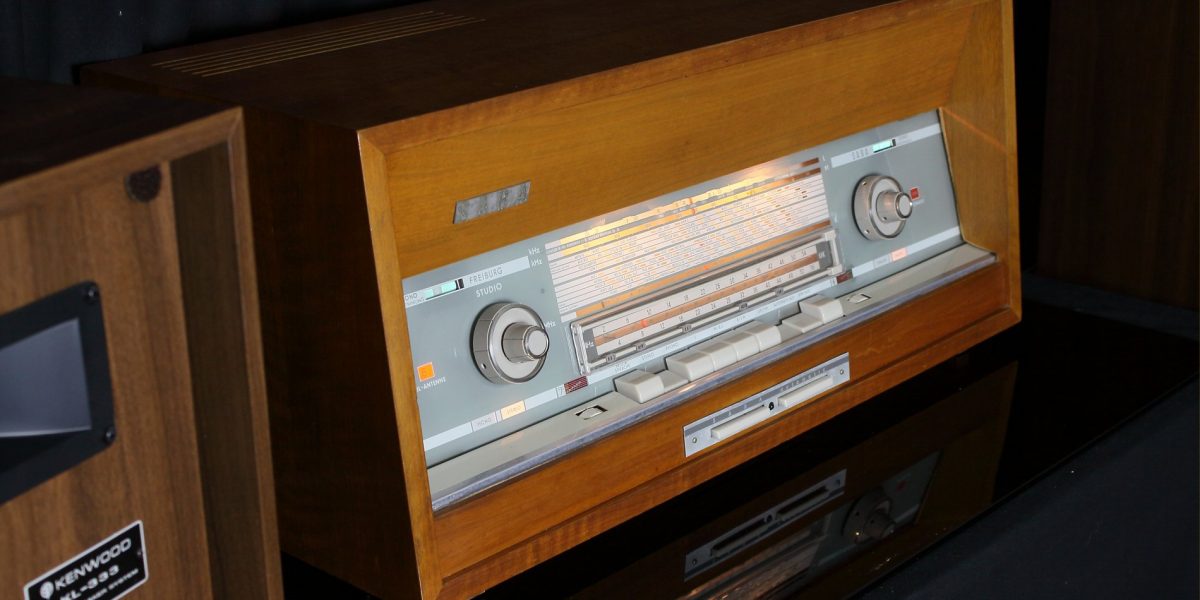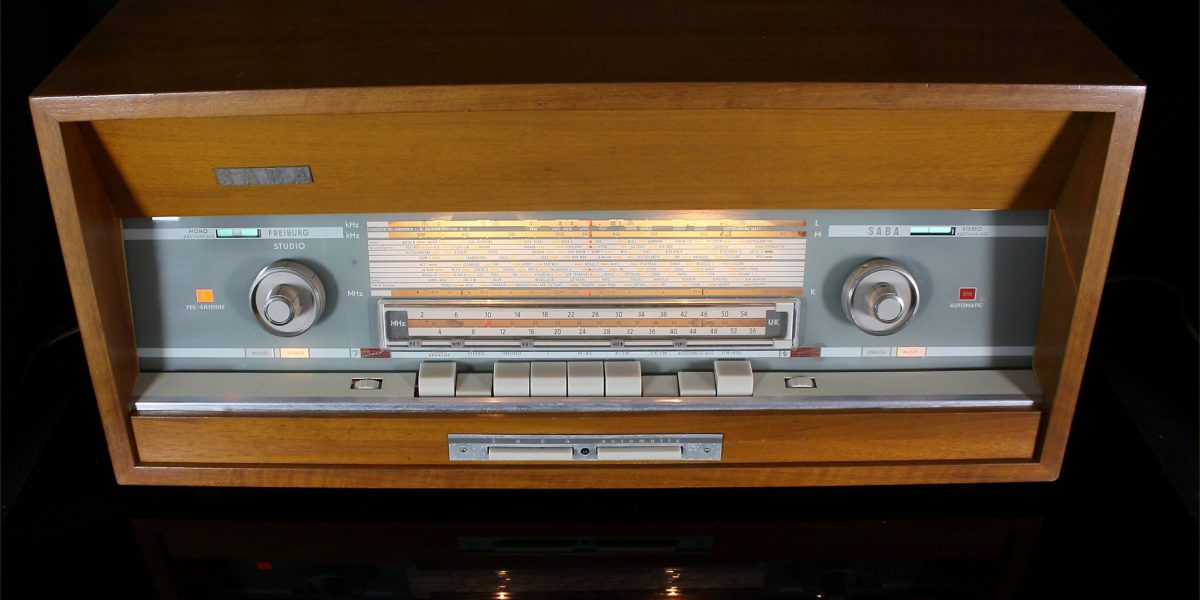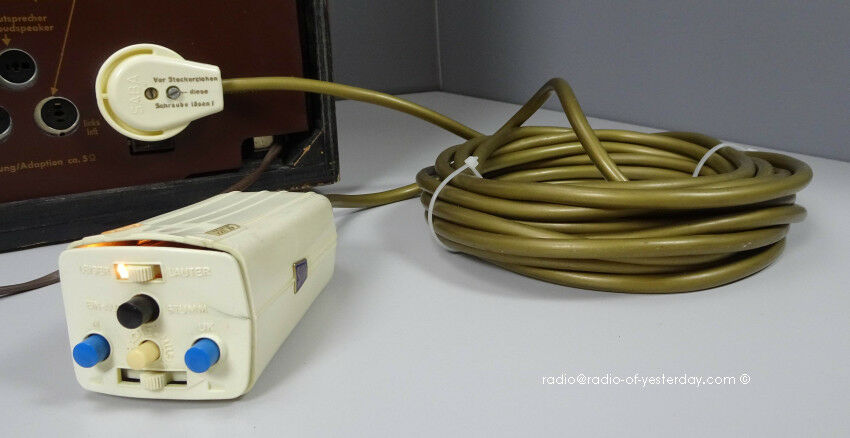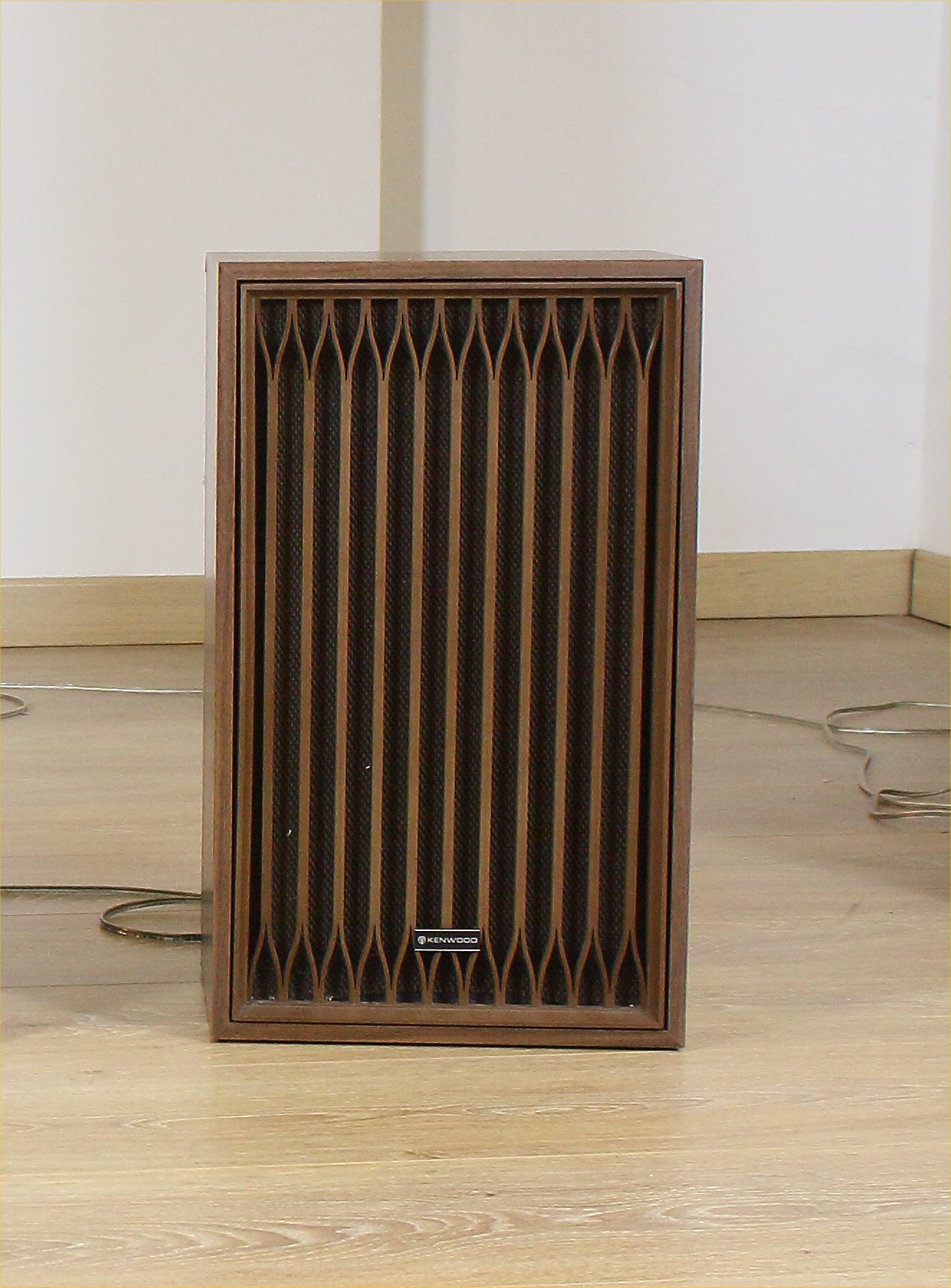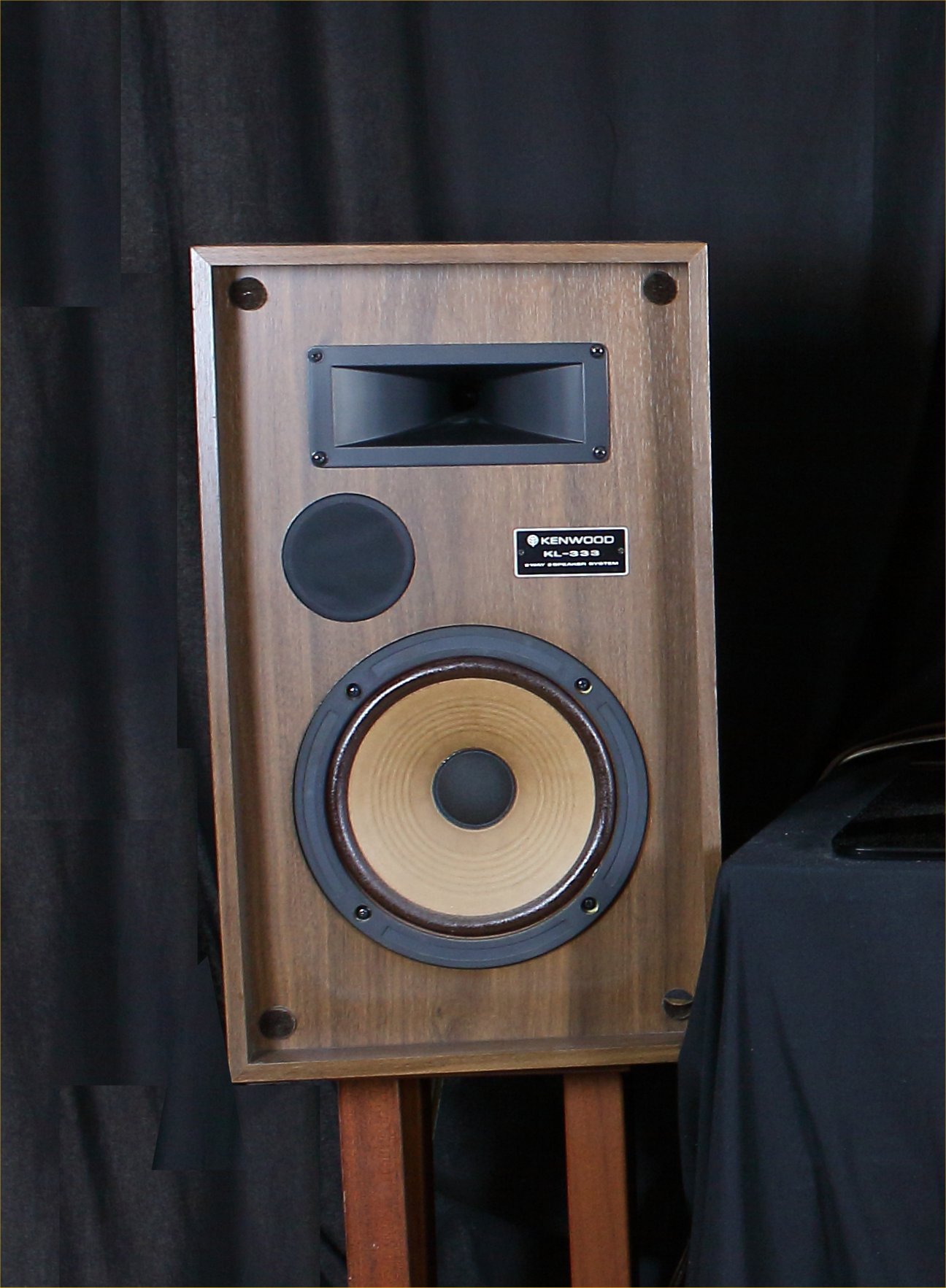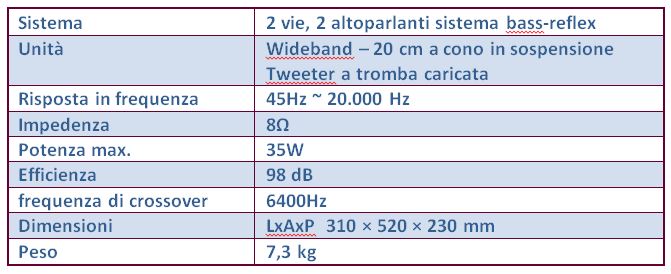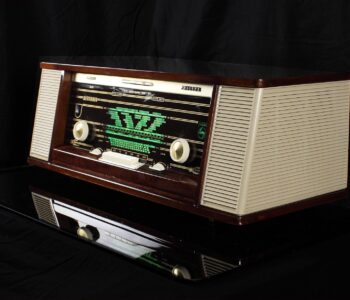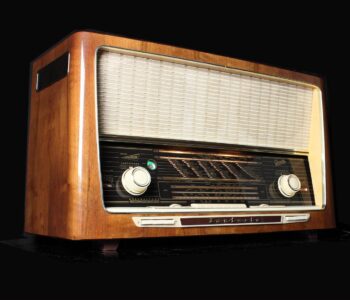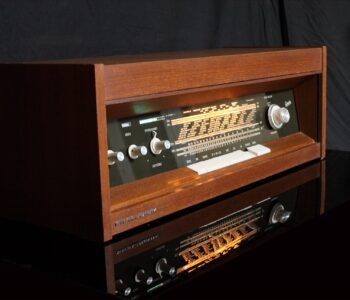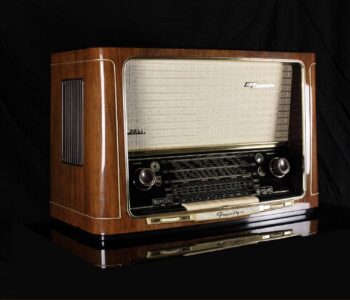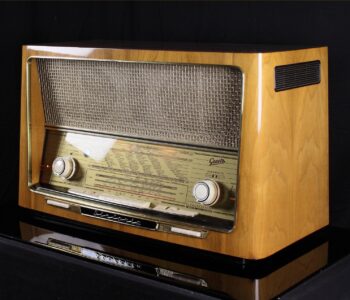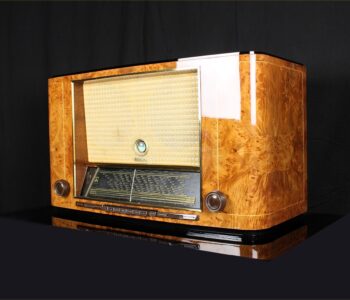 freiburg studio a - en
freiburg studio a - en
Saba Freiburg Studio A – en
- by giovanni
SABA FREIBURG STUDIO A
SABA FREIBURG STUDIO A
Saba Freiburg Studio A is the utmost expression of German production concerning the tube receivers equipped with automatic search.
None of the German receivers can give more and none have all of the features and performance of the Saba Frieburg Studio A.
Electronically, it is the same machine’s body used in the Saba Frieburg 14. Regarding this technical description you can refer to their page, but the possibilities of usage are different.
The first advantage – without loudspeakers, the furniture is more compact and is more easily arranged in any given space.
The second advantage – it is possible to join the device with compatible loudspeakers and place them in the most appropriate position for ideal listening.
The range of possibilities that receivers offer, as for example, the Saba Frieburg Studio A are very important. If used well, they can radically change the sound of a system.
As part of this particular review, I would strongly recommend consideration is given to the following advice to enhance the listening experience:
1- Do not place the electronics between the two loudspeakers.
In the pictures the receiver is in the middle of the two loudspeakers, are exclusively for photographic needs.
In a real configuration it must be placed on one side.
Listening to music is a total experience and captivates other senses beyond hearing. Try to listen to a track in the dark and then listen to the same track in the light in your home. Also, listen to the same track used as a soundtrack watching a film. Lastly, try to listen to the same track once more watching the video of the concert.
In all these cases, and in many other situations, the brain will detect and develop sound in different ways. It will create different feelings even though we are listening to the same track.
Placing the electronics in the middle of the loudspeakers distorts our perception of the sound.
Also pay attention to the mechanical resonance of the equipment placed in the centre of the loudspeakers.
None of the tube receivers, produced in Germany, could give more.
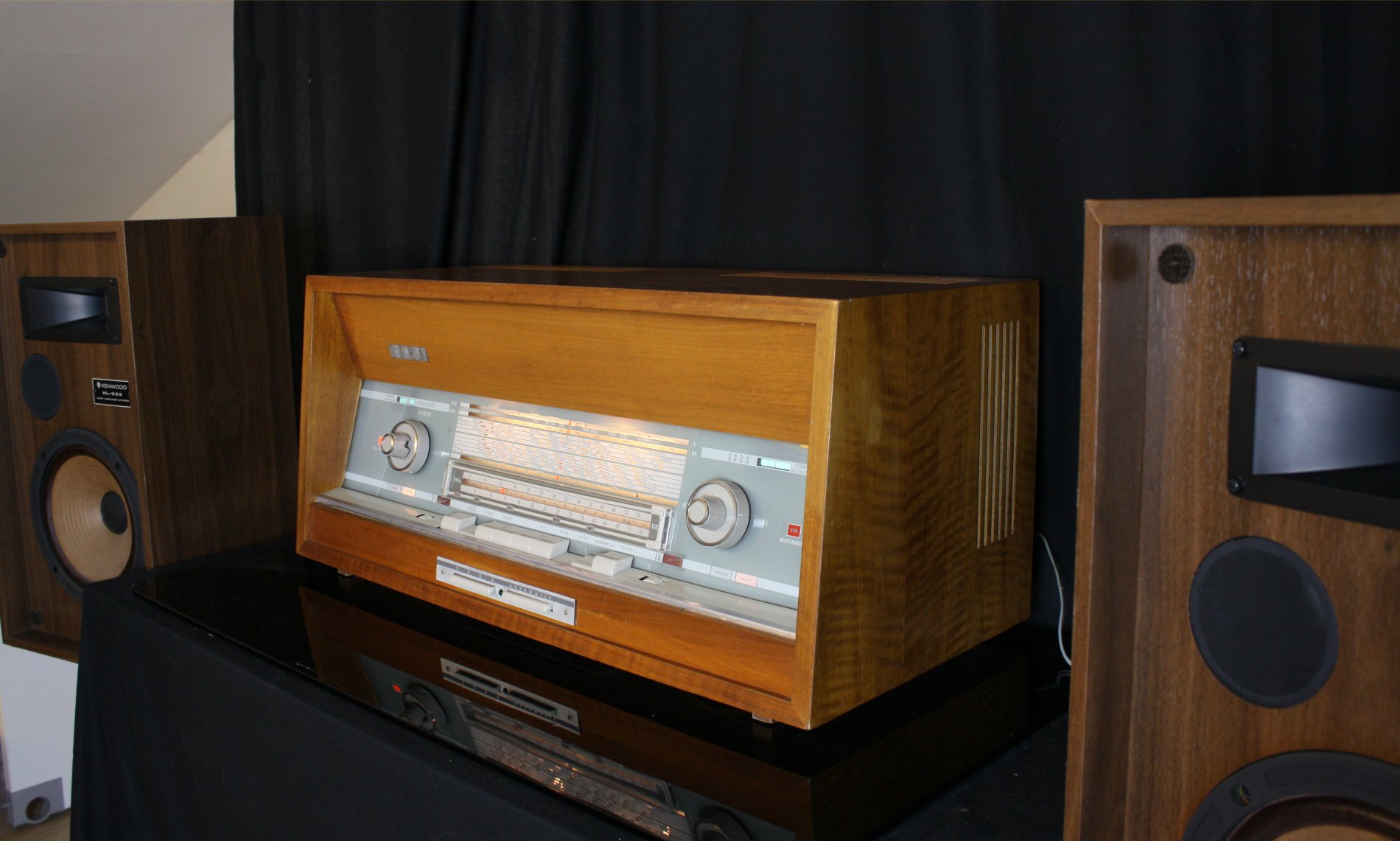
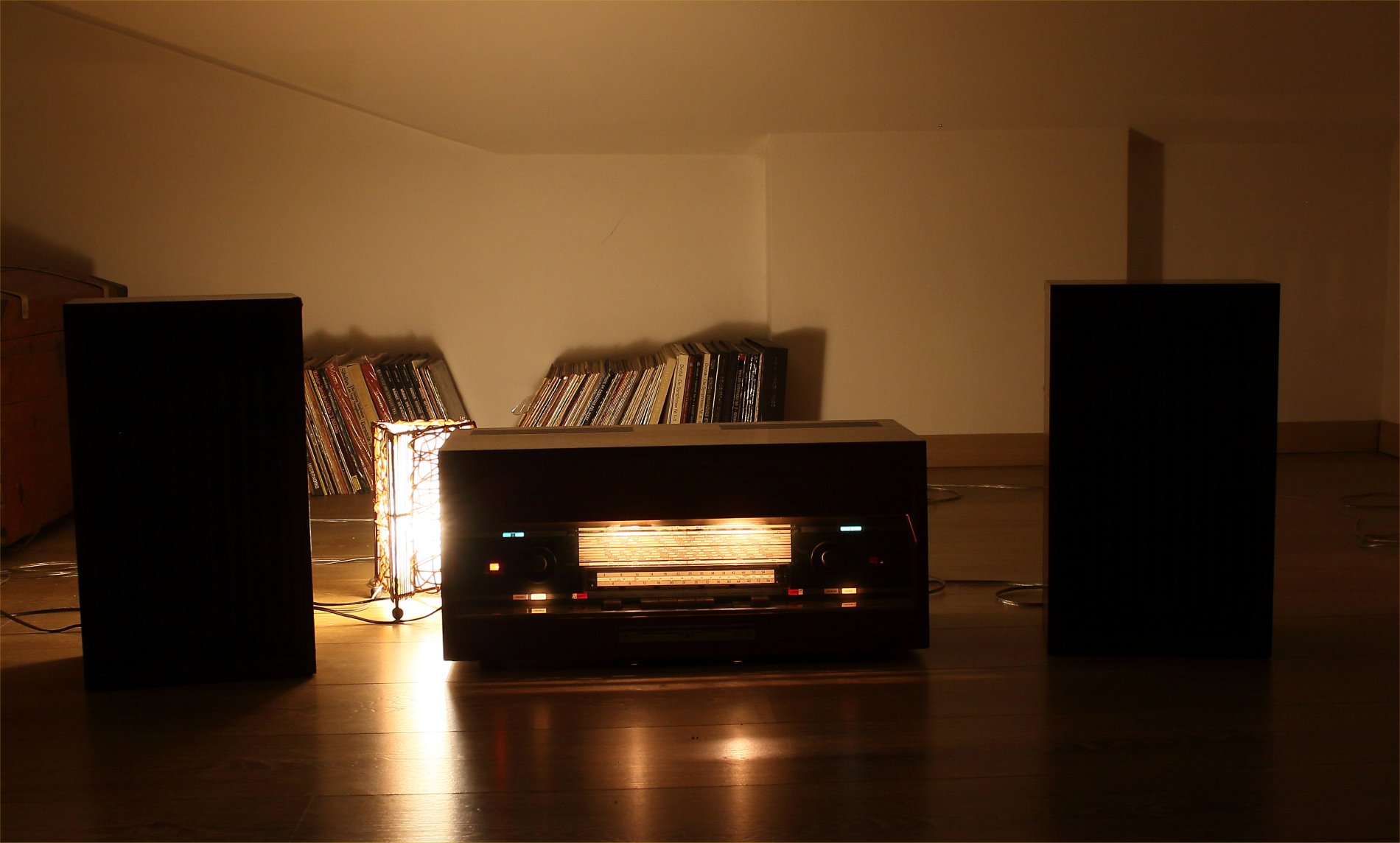
-
BLUETOOTH
Bluetooth receiver embed
-
MULTI PLATFORM CONNECTION
Each radio is equipped with a cable for connection to any digital device.
TUBESOUND IMPROVEMENT
- Bluetooth receiver embed – The unit is equipped with a BLUETOOTH receiver powered directly by the receiver power supply. This makes it possible to control the amplifier from any external digital device as an IPAD, a Smartphone, or a sophisticated multimedia station. So you can hear your preferred web station or your lossesless file without cables on the room. Wireless Receiver can be equipped upon requests.
– Multi Platform Connection – A customized adaptation cable to connect any digital device as Iphone, Smartphone, Laptop, CD Player etc. will be provided with this radio. This special cable suits the different impedances between the modern equipment and the receiver. Furthermore the two stereo channels flow into one without increasing the load to the input unit.


HISTORY
SABA is the acronym for Schawarzwälder-Apparate-Bau-Anstalt meaning engineering institute of Technological appliances of the Black Forest.
The company was founded back in 1835 by Joseph Benedikt with the initial name of Jockele-Uhren, but only in 1923 the production of radio devices began and the company went under the name of SABA.
Toward the end of the 20s SABA became famous with the well-known S35 and in the following years it became the second German producer after Telefunken. During the war SABA produced military equipment and in 1945 the company was completely destroyed by a bombing.
In 1947 the production of radio devices began again and SABA distinguished itself immediately for ist avant-garde and high- quality production.
hey also began to produce TVs (the first PAL color TV is a SABA), house appliances and medical equipment. Many Italians used to work there. The Alnico Greencone loudspeakers became popular for their linearity, power handling, constant impendence that would be employed in each Hi-Fi devices of that time.
The radio devices with motorized tuning became popular as well and SABA became the representative German brand meaning quality, reliability and detailed precision. In the 1970s the decline began. According to specialized magazines of that time not having a Japanese device at that time meant not having Hi-Fi. In the 80s Thompson took over SABA. In the 90s the other way around, having a Japanese device of the 70s meant not having Hi-Fi. They found out that they functioned with a 96% counterreaction and that a device with 0.001 db from 1 to 100 KHz extension did not necessarily sound good.
We do not trust our ears and we do trust what other people say not necessarily with a good purpose.
2007: due to insolvency SABA disappeared from the TLC (Chinese) and Thompson (French) joint venture, and SABA ceased to exist.
MAIN FEATURES
Year of production: 1963-64
10 AM Circuits
13 FM Circuits
Wavebands: Medium Waves (OM), Long Waves (OL), Short waves (OC), FM (UKW)
Dimensions (LHD): 680 x 310 x 310 mm / 26.8 x 12.2 x 12.2 inch
Net weight: 20.5 kg / 45 lb 2.5 oz
14 Tubes: EC92 EC92 ECH81 EF89 EM87 EBF89 EF86 EF86 ECC83 ELL80 ELL80 EM84 EABC80 ECL80
Ferrite rotating aerial
Automatic tuning research
Optional remote control
FM stereo decoder

TONE CONTROL WITH LEVEL INDICATION
The tone control system is really efficient. Above the tone control knob you can find a small window that progressively lights up indicating the emphasis given to the band.

AERIALS
Rotating ferrite curve with lightened window indicating its position.
The ferrite curve can be rotated through a big knob which is coaxial to the volume knob. Inside the piece of furniture there is a dipole for the FM reception and a directable ferrite curve for the AM reception.
SEPARATE CONTROL TUNING BETWEEN AM AND FM
The device is equipped with separated tuning mechanisms for AM and FM bands and for each of the FM bands.
There is only one tuning knob but the selector changes on a cable and pulley system that are separated according to the band.
Worth noticing is the accuracy and the complexity of the motorized FM group.

AUTOMATIC MOTORIZED TUNING
The tuning system is a masterwork.
It is a motor with windings supplied in a phase shifted by some capacitors. It permit to change the motor rotation direction of according to whether the search is in one sense or another.
The tuning is centered by drawing part of the signal from the CAC circuit and by using a relais controlled by a tube.
As already mentioned, calibration is rather complex and it cannot be put into practice without referring to SABA’s original manuals.
Below a detail of the engine and the scheme section to control the automatism.


VOLUME CONTROL
Another interesting feature is the volume control.
The knob does not automatically control the volume potentiometer. It controls through an unknot push-back.
The motorized remote control has a slight friction effect which strengthens the resistance when you turn the knob.
LIGHTENED KEYBOARD
Another remarkable feature is the lightened keyboard.
The selected button lightens up.
The small Light bulbs are very rare and hard to be found.
MONO/STEREO SWITCH
Mono/stereo commutator does have its lightened indicators as well.
Usuallu the stereo position work only when you are listening to CDs or IPODs, but this model is equipped with a stereo decoder allowing an accurate stereophony FM reception.
The magic eye on the right side works as a modulation intensity indicator of the stations that have been received in stereophony.
The picture above shows the reception of a stereo station.
LOUDSPEAKERS
This receiver could be coupled with any loudspeaker, equipped with a high efficiency.
If there is insufficient space for the Open Baffle, or horn loudspeaker, this can be remedied by coupling this Saba to two other favourite loudspeakers of mine.
One is the KL333, a two way Bass Reflux with horn tweeter, manufactured from the Trio-Kenwood in 1972. These loudspeakers are excellent, very pleasant and defined.
They have an efficiency of 98dB and answer infrequency nearly linear from 45 to 20.000Hz.
These loudspeakers have been designed with great care.
The Bass Reflux duct, completely eliminates the tails on the bass, the weakest point of this type of speaker.
The most interesting feature is the slant of frequency to 6400 Hz.
This slant is very high and the resulting effect is almost like that of full-range loudspeakers.
There is a great presence and precision in the localization of instruments and the voices.
Compared to the classic, full-range loudspeakers, there is a bass reinforcement thanks to the duct system and reinforcement for acute sound thanks to a horn tweeter.
With some care in the arrangement of the speakers, the resulting sound will surprise you for its freshness and depth.
CONTROL PANEL

The first small window that can be seen on the left side indicates whether the ferrite curve is inserted and its position.
On the left side you can also find the volume control (with incorporated loudness) and the ferrite curve rotation control.
Right above the volume control there is a magic eye indicating the perfect tuning of each station.
Below you can see the Mono/Stereo indicator and further below the bass control knob.
The AM bands with Short, Medium and Long Waves and the FM displays.
Starting from the lefthand corner you can see the Musik/Sprache, Stereo/Mono, AUX input buttons, the band switch buttons, the Long, medium, short waves and FM switch buttons and the motorized tuning system (Automatik) button.
Lastly the ON button.
Next to it the acutes control knob is to be found.
The Musik/Sprache equalizer indicator.
On the right, the tuning knob, which is supported by a big fly-wheel that renders its movement really pleasant.
The automatic tuning functioning indicator is to be found on the right as well.
Above the stereo modulation indicator and below two buttons for the automatic tuning functioning. Each button activates the automatic tuning mechanism in one or the other direction. By pushing one of those buttons the engine constantly activates the tuning indicator for a fast reposition.

REAR SIDE
Output for external speakers.
Socket for recorder (tonbandgerat).
Turntable input (Tonabnehmer)
AM and FM aerial inputs and ground socket.
Remote control inputs
THE USUAL AMAZING LAST IMAGE
